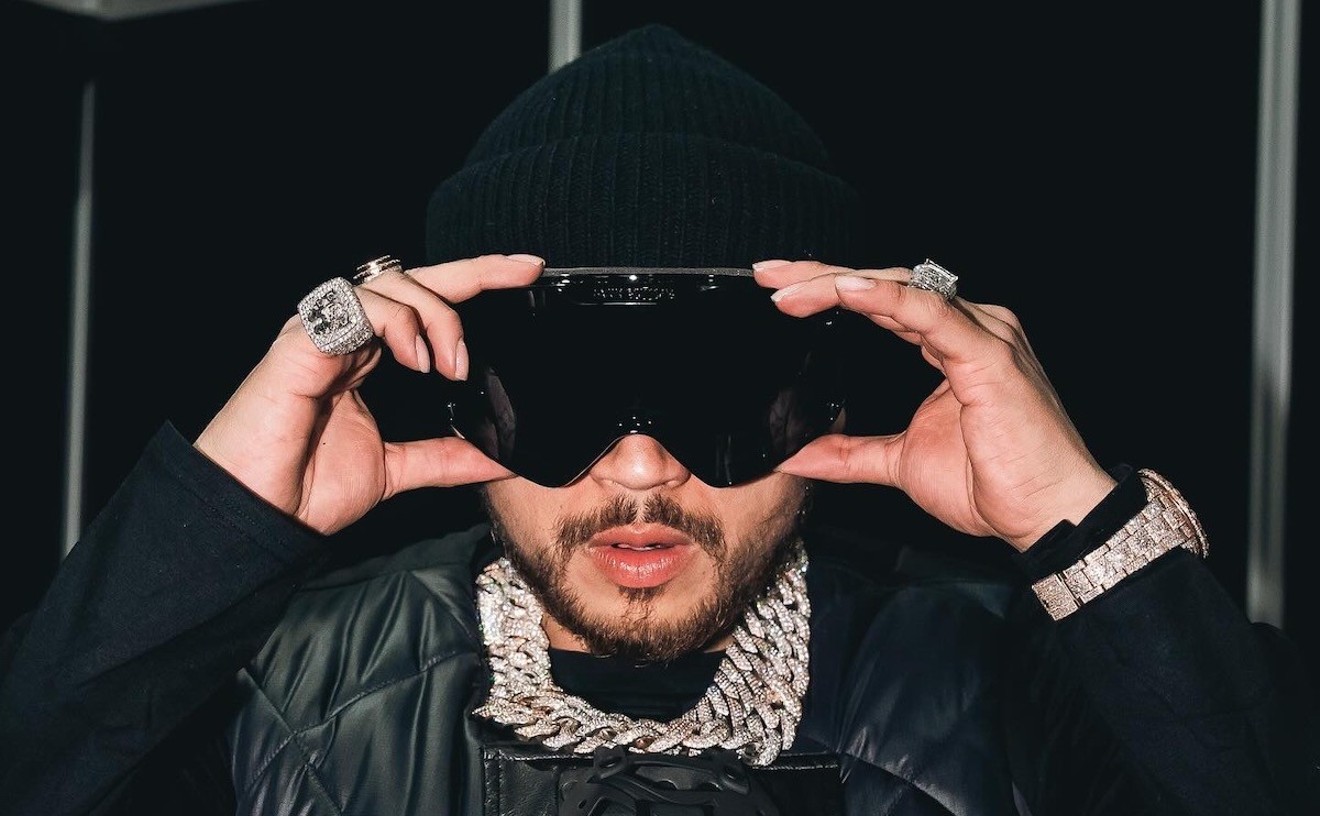In the fall of 2013, when former MOCA North Miami curator Bonnie Clearwater, now of the NSU Museum of Art Fort Lauderdale, saw the "Café Dolly: Picabia, Schnabel, Willumsen" exhibition in Denmark, she knew she had to bring it to Florida. The show features paintings by three major art players: the late Francis Picabia and Jens Ferdinand Willumsen, and the still-living edgy filmmaker and internationally acclaimed artist Julian Schnabel.
The elegant and well-heeled Clearwater was no stranger to Schnabel's work. The New York native, raised in Texas, is known for adhering broken plates onto canvases, creating evocative, textured paintings. His film credits include Academy Award-nominated The Diving Bell and the Butterfly, Before Night Falls, and Basquiat.
"I've worked with Julian Schnabel for many years on various projects, including a major exhibition in the 1980s and a folklore exhibition in Germany about his work," Clearwater recounts.
"We have a long history. And almost two years ago, he told me about an exhibition organized of his work with Francis Picabia in the 'Café Dolly' show, and that really intrigued me. A few months later, Julian sent me a book, and I had no idea who J.F. Willumsen was until that moment, and his work blew me away."
That scintillating showcase references Dolly, the world's first cloned sheep of 1996, and opens for South Florida museumgoers on Saturday. The exhibit will span two floors inside the NSU Museum.
Each artist broke the traditional painting rules for their respective generations. In the 1980s, according to Clearwater, Schnabel questioned, "Who said the canvas has to be flat?"
In the show, there's a portrait on the second floor of his second wife, Olatz Lopez Garmendia, in which her striking red lips, dramatic eyebrows, long neck, and dove-like gaze take on this rough and graphic mosaic-like feel. His use of red and black paint strokes appears to intensify his muse, leaving the viewer in visceral wonderment.
Downstairs in the atrium near the museum's lobby are two large-scale found-object paintings, one a portrait of a blonde and the other of a brunette girl by Schnabel. Clearwater explains that the artist had gone thrifting in Texas and picked up these "1950s amateur originals" and used them as inspiration, keeping the style just as the original but on a ginormous canvas. He then left his mark by slashing a thick, bar-like stroke covering each woman's eyes. Clearwater explains that he essentially did just as Marcel Duchamp did when he took a postcard of The Mona Lisa and drew a mustache on her face.
But why? "He's not doing this to deface it, but rather he's marking it up in a way to make people look again," she says. "He complicates our viewings." In this instance, she adds, the girls' chins are more prominent because their eyes are hidden.
Upstairs, there are source materials that Parisian Picabia had collected over the years -- trinkets, photos, magazines, small statutes. His final painting in his oeuvre is included in the show, providing a rare treat for museumgoers. In his self-portrait, there's an eerie and desirous effect, as he's surrounded by two women, one who is lying down and gazing up at him.
Willumsen's works take on these kitsch renditions of girlie and erotic magazines and tourism posters. It's as though the artist is rejecting romanticism and glamour with a touch of hysteria. There's one with a woman with a black cat in her lap. The painting's highlights give this impression of madness, her smile is wicked, and her hands appear to have a life of their own.
Overall, the show has a rawness that cohesively ties the roughly 75 works together.
"All three artists were so unique in developing their own visual vocabulary," Clearwater observes. "Seeing the three together is impressive. They have put forward issues in art that I'm very intrigued by, including the very nature and philosophy of aesthetics and the nature of painting itself."
Mid- to advance-level artists are invited to take a master painting workshop with Julian Schnabel on Thursday, October 9, from 10 a.m. to 5 p.m. Cost is $200 for museum members, $250 for nonmembers, which includes membership. Visit [email protected], or call 954-262-0228.
Café Dolly: Picabia, Schnabel, Willumsen. On display October 12 to February 1 at Nova Southeastern University Museum of Art Fort Lauderdale, 1 E. Las Olas Blvd., Fort Lauderdale. Call 954-525-5500, or visit moafl.org.
New Party Rules for Millennials
Top 20 Sexiest R&B Songs from the '90s to Today
Ten Best Florida Metal Bands of All Time
Ten Most Annoying Drunk Dudes You Meet at a Bar
Follow @CountyGrind










